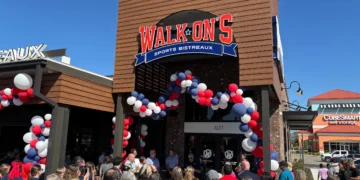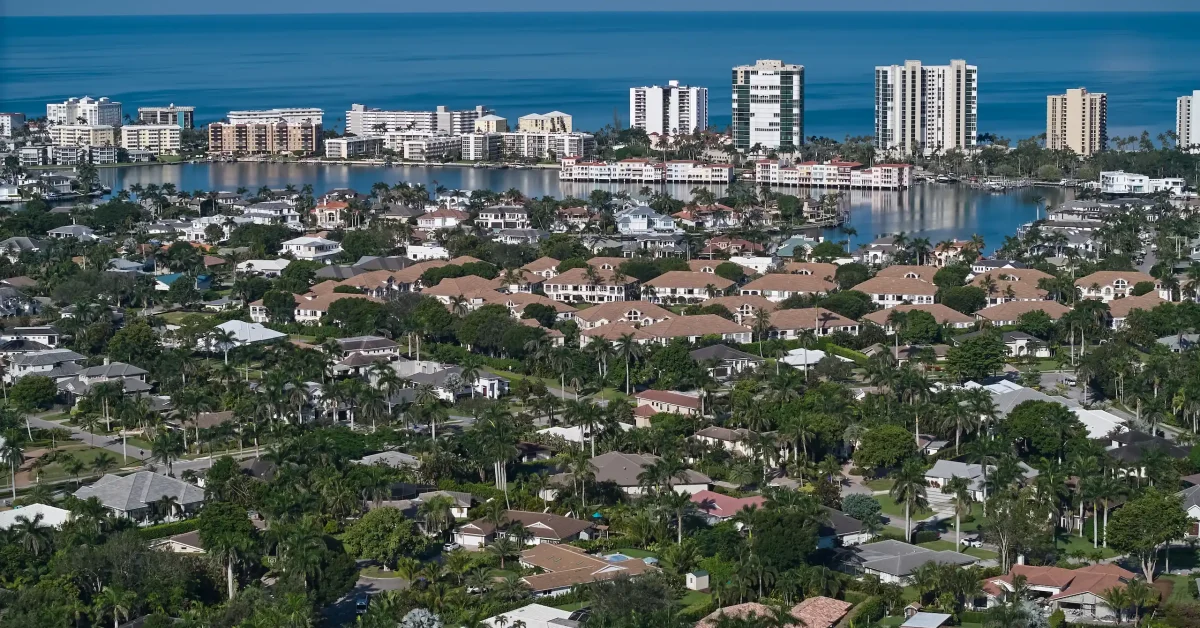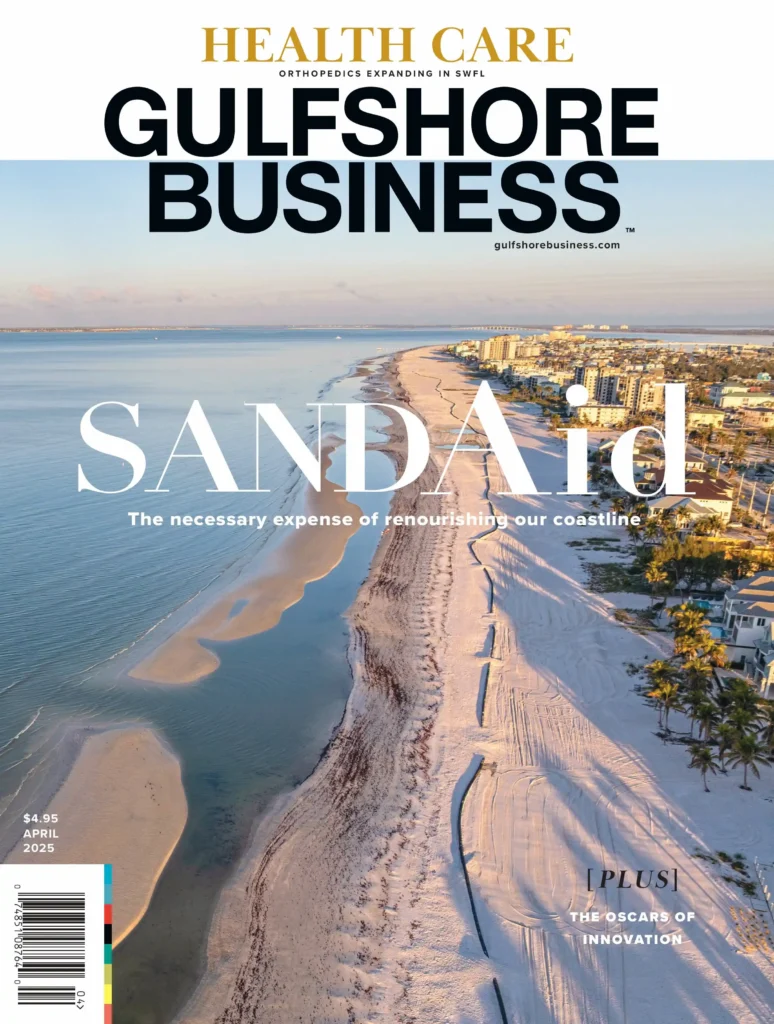Soaring insurance rates, condominium association fees and new regulations have decreased demand and prices for condominiums along Florida’s coasts while the inland market remains stronger, a Florida Gulf Coast University professor said.
H. Shelton Weeks, professor of Real Estate and director of the Lucas Institute for Real Estate Development & Finance, agrees with a recent Redfin analysis of MLS data showing the biggest price drop for condos has occurred along the Gulf Coast, from the Panhandle south to Naples.
In early 2025, the Gulf Coast condo market showed a 5% price decline, and the Atlantic Coast was down 3%. Meanwhile, inland communities experienced a 5% uptick in prices.
The data report focused on metropolitan statistical areas, with the Gulf Coast MSA including Cape Coral, Crestview, Homosassa Springs, Naples, North Port-Sarasota, Panama City, Pensacola, Punta Gorda and Tampa.
“For the last couple of decades, the majority of the population was along the coast,” Weeks said.
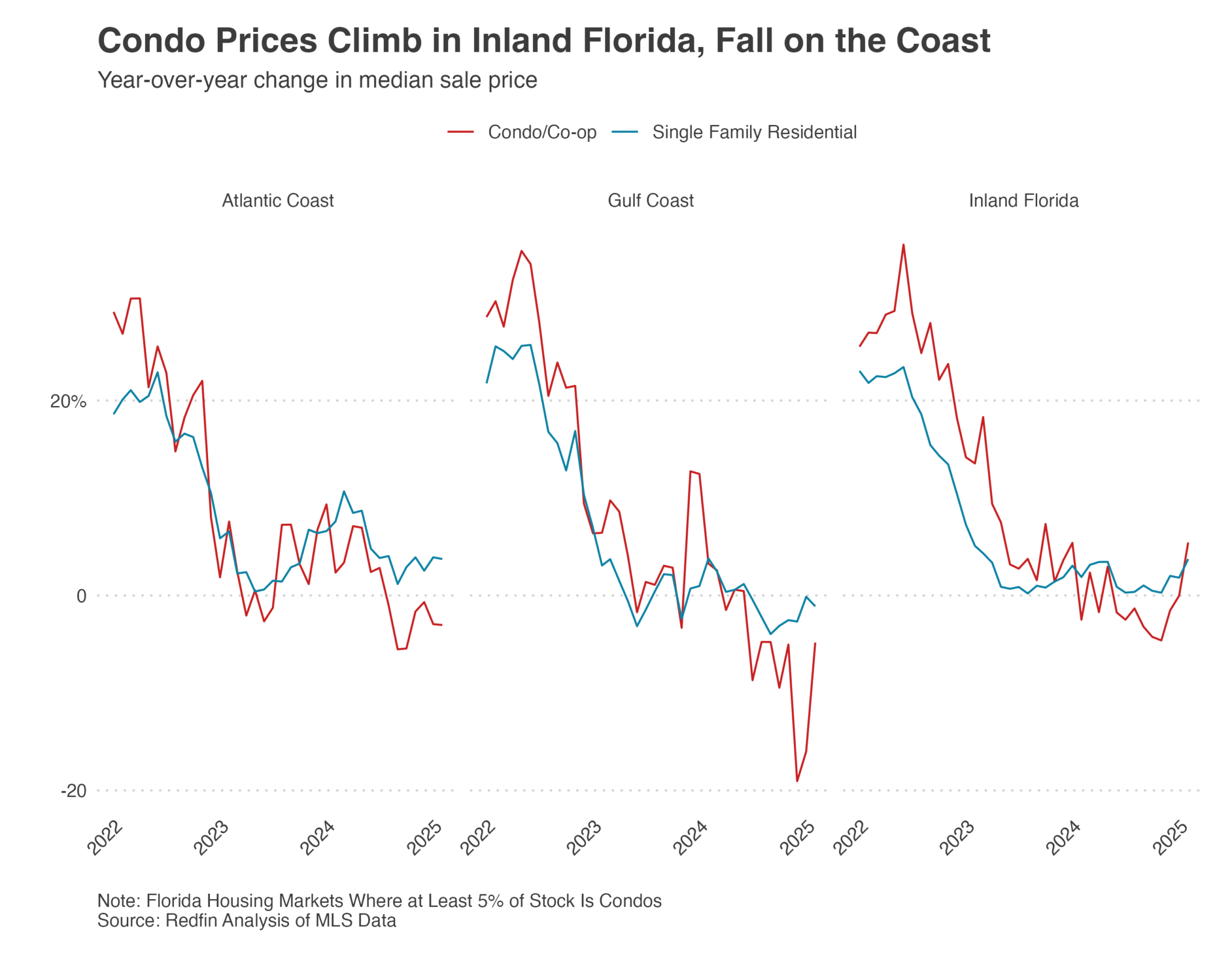 Most newcomers to the state chose to live on or near the water. Since land is more expensive and deemed more valuable along the coasts, developers built tall condos to keep pace with demand, Weeks explained.
Most newcomers to the state chose to live on or near the water. Since land is more expensive and deemed more valuable along the coasts, developers built tall condos to keep pace with demand, Weeks explained.
Meanwhile, inland communities’ land was considered less valuable. As growth away from the coasts began to surge, developers built condos with fewer stories than those on the coast, he said.
In addition, insurance carriers considered some communities less of a risk from hurricanes since they were farther from the water.
Currently, 90% of Florida’s condominiums are more than 30 years old, and most of them are in coastal communities, Weeks said.
During the pandemic, a steady stream of buyers came onto the market. Florida’s lockdown during the pandemic lasted only weeks, and a buying frenzy took place beginning in 2020, driving condo prices higher.
But within a couple of years a perfect storm occurred.
After the Surfside condominium collapse in June 2021, Florida legislators adopted Senate Bill 4D, requiring structural inspections for condo buildings three stories or higher when they turn 30 years old, or at 25 years if the buildings are within 3 miles of a coastline.
Shortly after the law was passed, Charlotte County sent notices to owners of 168 condominium buildings built decades ago and at least three stories high, informing them the structures must undergo comprehensive inspections under the new state law.
Senate Bill 4D was modified in June 2023 with Senate Bill 154 to give some control to local government.
Now, instead of mandating buildings within 3 miles of a coastline be inspected at 25 years and 10 years after that, the 25-year requirement is an option for local governments to adopt depending on local circumstances, such as the proximity to salt water.
There was no change to the minimum requirement to inspect buildings once they reach 30 years of age. There was a total of about 285 condominium buildings in
Charlotte County subject to the law as of late 2024.
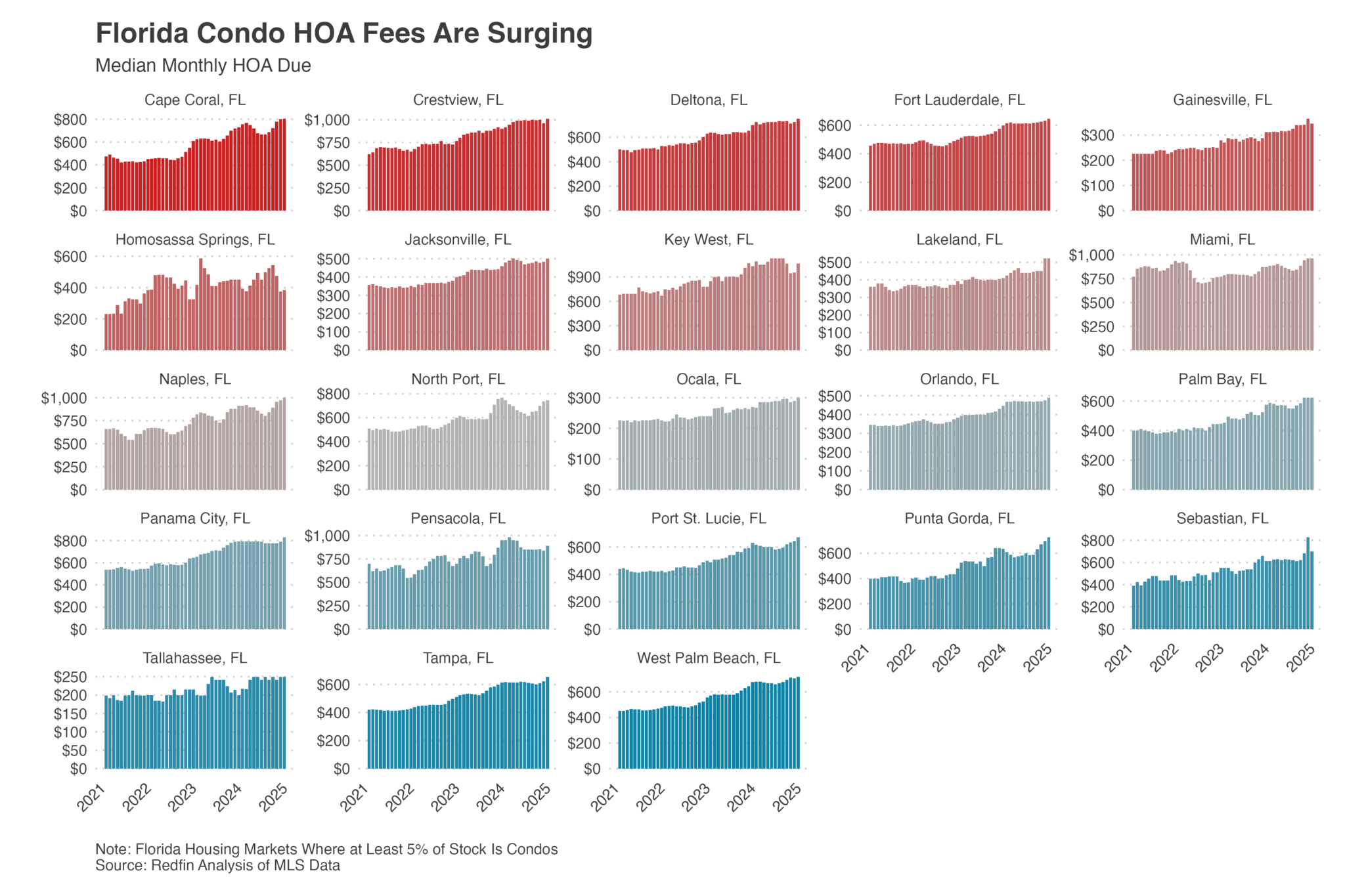 COAs are required to set aside reserves to pay for the structural inspections and improvements. The reserve funds come from condo owners, many who saw their COA fees increase.
COAs are required to set aside reserves to pay for the structural inspections and improvements. The reserve funds come from condo owners, many who saw their COA fees increase.
After Hurricane Ian slammed the Gulf Coast in September 2022, a number of Charlotte County condominium unit owners experienced soaring COA fees due to rising insurance costs and the cost of repairing their building.
In Cape Coral, where 69.7% of condo listings have a high flood risk, the median monthly COA fee in January was $804, up 10.2% year over year. The median year-over-year sale price dropped 6.8% to $326,250 in a market with a 36.4% increase in active listings.
With a $1,000 median COA fee, the Naples MSA had 67% of its listings in a high flood risk area with 51% of its inventory 30 years or older. The median sale price showed a slight decrease to $522,500, Redfin data shows. There was a 43.2% increase in active listings.
COA fees in the Punta Gorda MSA showed a 14% year-over-year increase in January to $726. More than 76% of listings have a high flood risk and 55% of inventory is more than 30 years old. The median sale price in January decreased nearly 40% to $180,950 with 31.7% increase in inventory.
Meanwhile, condo prices in the inland metro regions Gainesville, Lakeland, Ocala, Orlando and Tallahassee rose and outperformed price increases for single-family homes, which were up 3.7%.
